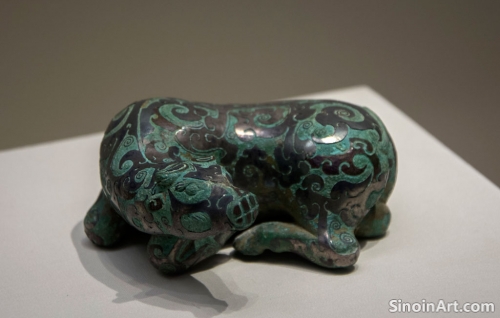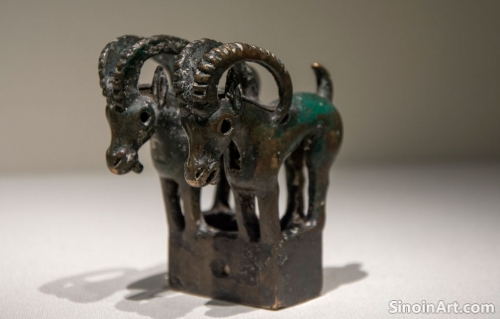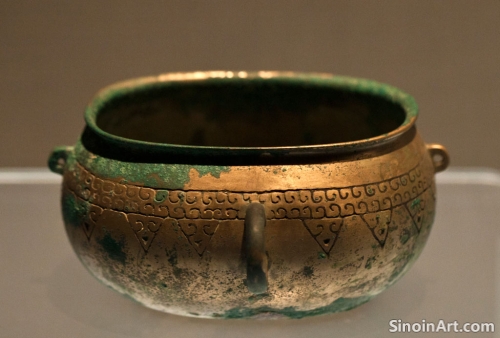The Influence of Bronze Ware on Later Chinese Decorative Arts
|
The forms, motifs, and techniques developed in the production of Chinese bronze ware had a lasting impact on later Chinese decorative arts, including lacquerware, textiles, and jade carvings. The enduring legacy of bronze helped to shape these later art forms. The ancient traditions set in the bronze age became central elements of future generations of Chinese artists and artisans.  The shapes of bronze vessels, such as ding, gui, and zun, often served as prototypes for later ceramic and lacquerware forms. The influence of bronze can be clearly seen in the shapes and designs of these later objects. These shapes became fundamental forms that resonated throughout Chinese art.  The decorative patterns and animal motifs seen on bronze ware, such as the taotie, dragons, and phoenixes, were widely adopted in textiles, carvings, and paintings, creating a sense of cultural continuity across various art forms. These same symbols and designs were adopted by artists working in other media, demonstrating the enduring appeal of these ancient symbols.  The emphasis on balance, symmetry, and intricate detail, which were hallmarks of bronze craftsmanship, continued to influence the aesthetic principles of Chinese art for centuries. The design principles developed during the bronze era were a key influence on later artistic creations. The ongoing influence of bronze ware on later Chinese decorative arts demonstrates the timeless beauty and artistic power of these ancient objects. These pieces served as foundational forms for a vast number of later works of Chinese art. |
Tag : bronze influence, Chinese decorative arts, jade carvings, lacquerware, textile designs
Related information
- Bronze Ware and Ancient Chinese Understanding of Astronomy: Maps of the Sky and the Measurement of Time
- The Enduring Mystique of Chinese Bronze Ware: A Timeless Allure for Collectors and Scholars
- The Use of Bronze in Ancient Chinese Agriculture: Tools and Innovations
- Bronze Ware and the Influence of Ancient Chinese Philosophical Schools: Confucianism, Daoism, and Legalism
- Bronze Ware and the Development of Ancient Chinese Music Theory: The Role of Tuned Instruments
This article explores the connection between bronze ware and ancient Chinese understandings of astronomy, highlighting the use of celestial motifs, the depiction of astronomical phenomena, and the creation of instruments that aided in understanding the universe.
This article reflects on the enduring allure of Chinese bronze ware, highlighting its appeal to both collectors and scholars, its timeless beauty, its historical significance, and its ability to inspire both fascination and the ongoing pursuit of knowledge.
This article explores the use of bronze in ancient Chinese agriculture, highlighting the types of tools and implements used, its role in enhancing agricultural productivity, and its impact on the development of ancient Chinese society.
This article explores how bronze ware was influenced by different schools of thought in ancient China, including Confucianism (order and ritual), Daoism (nature and spontaneity), and Legalism (authority and order), and demonstrating how these philosophies shaped both design and usage.
This article explores the influence of bronze ware on the development of ancient Chinese music theory, highlighting the role of tuned instruments, especially bianzhong bells, and their impact on scales, harmonies, and the understanding of musical structure.